2011 CCOE Award Recipients
Brigham and Women’s Pain Management Center
Boston, MA
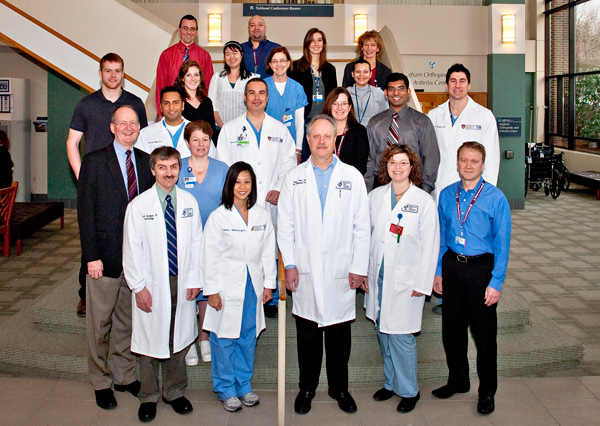 National and international referrals—including referrals from other tertiary care center pain programs—speak to the caliber of care received by patients at the Brigham and Women’s Hospital (BWH) Pain Management Center. The Center, which serves 19,000 patients annually, was a 2007 APS Clinical Centers of Excellence (CCOE) Award recipient. As a second-time winner, the Center is recognized for sustained excellence and program enhancements that reflect state-of–the-art interdisciplinary pain care. Noteworthy initiatives include expanded psychological, social work, and pharmacy services and introduction of palliative care and pelvic pain programs.
National and international referrals—including referrals from other tertiary care center pain programs—speak to the caliber of care received by patients at the Brigham and Women’s Hospital (BWH) Pain Management Center. The Center, which serves 19,000 patients annually, was a 2007 APS Clinical Centers of Excellence (CCOE) Award recipient. As a second-time winner, the Center is recognized for sustained excellence and program enhancements that reflect state-of–the-art interdisciplinary pain care. Noteworthy initiatives include expanded psychological, social work, and pharmacy services and introduction of palliative care and pelvic pain programs.
The Center’s mission is to investigate the mechanisms and behavior associated with chronic pain through basic science, translational, and clinical research. The Center’s multidisciplinary, multicultural staff treat complex issues surrounding patients’ pain and actively engages in local, regional, national, and international efforts to improve the quality of pain care. The Center collaborates with Dana-Farber Cancer Institute, the BWH Spine Center, the International Mesothelioma Program, Spaulding Rehabilitation Hospital, and the Veteran’s Administration.
BWH Pain Management Center staff is committed to advancing scientific knowledge, as evidenced by an increasing number of scientific publications (average of 15 per year) and expansion of the research team between 2008 and 2010. The center conducts opioids and angiogenesis research and offers a continuing medical education program to manage risk for patients receiving long-term opioid therapy. In addition to continuous annual training for eight pain fellows in the highly regarded ACGME-accredited pain fellowship program, the Center teaches up to 35 residents, 15 pharmacists, and five nurse practitioner students.
Comprehensive Pain Center of Sarasota
Sarasota, FL
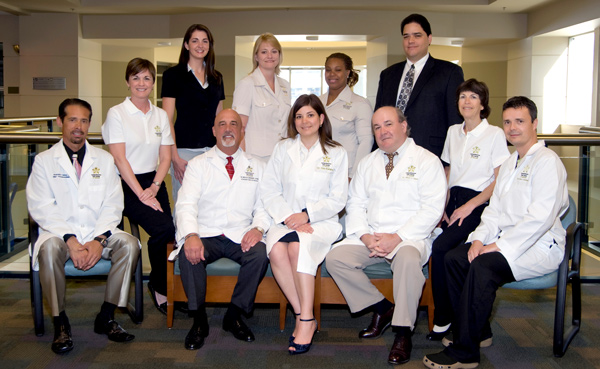 In a state where an average eight deaths occur every day due to prescription drug abuse, the interdisciplinary approach taken by the Comprehensive Pain Center of Sarasota (CPCS) in Sarasota, FL demonstrates a growing public benefit, with evaluation and treatment services unparalleled in Southwest Florida’s constantly growing healthcare market.
In a state where an average eight deaths occur every day due to prescription drug abuse, the interdisciplinary approach taken by the Comprehensive Pain Center of Sarasota (CPCS) in Sarasota, FL demonstrates a growing public benefit, with evaluation and treatment services unparalleled in Southwest Florida’s constantly growing healthcare market.
Our program embraces a patient-centered, evidence-based, and outcomes-focused approach to Pain Medicine. Dr. Myrdalis Diaz-Ramirez, our Medical Director, believes that a more holistic approach with a broader toolbox will yield better outcomes at a lower total financial and emotional cost to patients and their families. Our success has been achieved as a free-standing, unaffiliated program, further demonstrating an integrative approach is sustainable in the private setting. We believe that in a healthcare system that is moving from a fee-based to an efficiency-based compensation model, integrative programs are a key element to success.
At the Comprehensive Pain Center, we follow a multidimensional approach with a biophychosocial emphasis on understanding and managing pain. Offering modalities ranging from conservative to invasive with the right balance of interventional procedures, medication management, pain psychology, physical therapy, acupuncture, biofeedback, and a healthy aging program, both patients and their families have the best chance at healing. Care providers and support personnel meet weekly at multidisciplinary patient care conferences to discuss the patient plan of care. The Center’s spa-like atmosphere and culturally conscious bilingual staff contribute to a relaxing and nurturing environment.
The Center is very focused on the community with our town mayor recently issuing a proclamation at our multidisciplinary educational conference. The APS Centers of Excellence Award inspires us to further expand our community educational outreach programs, advance the evidence-based patient care model, and continue to grow our business as a model of how pain management should be practiced, particularly in the challenging private, for-profit sector.
Jane B. Pettit Pain and Palliative Care Center
Children’s Hospital of Wisconsin, Milwaukee
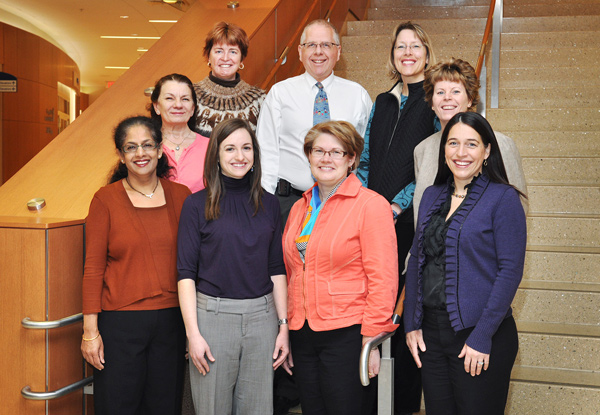 The Jane B. Pettit Pain and Palliative Care Center serves as a champion for pediatric pain treatment at regional, national, and international levels thanks to the services provided by its dedicated team and widely cited studies on acute and chronic pain treatment that appear in peer-reviewed journals.
The Jane B. Pettit Pain and Palliative Care Center serves as a champion for pediatric pain treatment at regional, national, and international levels thanks to the services provided by its dedicated team and widely cited studies on acute and chronic pain treatment that appear in peer-reviewed journals.
The program, which serves nearly 4,000 patients each year (including 75 home-care recipients), follows a multidisciplinary, family-centered care model that integrates medical and mental health services. The staff works collaboratively with families, schools, and other healthcare providers to deliver comprehensive care. The multidisciplinary chronic pain team spends 90¬–120 minutes with each child and family during the initial appointment, and families leave with a written, comprehensive treatment plan.
The program addresses acute, chronic, and palliative pain conditions; collaboration and transition between inpatient, outpatient, and palliative services ensures patients receive the best and safest care. The Acute Pain Service led a Six Sigma quality improvement initiative that resulted in improved evidence-based patient-controlled analgesia safety. Collaboration with the Center’s Sickle Cell clinic has improved cost-effectiveness and emergency department recidivism.
Four Pain Service team members serve on The Comfort Zone™ Committee, a hospital-wide pain committee that has brought pain management to the forefront across the health system and serves as a model for pain centers around the world.
Along with multiple specialty clinics, the Pain Service has developed a clinical outcomes registry; the group’s prospective collection of baseline and follow-up data will promote clinical-effectiveness research and improve patient care quality. Ongoing chronic pain research projects examine school functioning, obesity, mindfulness-based stress reduction, acupuncture, and yoga to facilitate recovery. Acute pain research projects include an examination of barriers to pain management and Parent-Nurse Controlled Analgesia in infants and in children with developmental delay.
Rehabilitation Institute of Washington
Seattle, WA
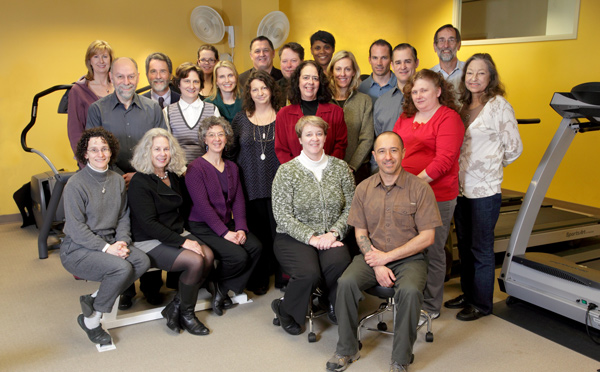 Before its move to an easily accessible freestanding facility in 2005, the Rehabilitation Institute of Washington was struggling financially in an academic medical center environment. The move launched unprecedented success—the program has since nearly tripled in size—and opened the door to new levels of credibility. The Institute now serves 650 patients per year and serves as a resource for local healthcare organizations and independent providers on strategies to prevent and manage acute and chronic pain.
Before its move to an easily accessible freestanding facility in 2005, the Rehabilitation Institute of Washington was struggling financially in an academic medical center environment. The move launched unprecedented success—the program has since nearly tripled in size—and opened the door to new levels of credibility. The Institute now serves 650 patients per year and serves as a resource for local healthcare organizations and independent providers on strategies to prevent and manage acute and chronic pain.
The Institute offers an interdisciplinary cognitive behavioral pain rehabilitation program focused on injured workers with chronic pain and disability. The Institute’s emphasis is on comprehensive education and active therapies to improve strength, endurance, flexibility, posture and body mechanics, exercise technique, psychological adjustment, functional abilities and return to work. In addition to physical and occupational therapy, the program includes group and individual cognitive behavioral therapy, medical education and management, nutrition counseling, vocational rehabilitation counseling, and specialty programs for complex regional pain syndrome (CRPS), combining comprehensive rehabilitation with regional anesthesia, and drug detoxification services.
Patients with limited English proficiency are provided interpreters, and onsite housing is available for those who are unable to commute to daily treatment. Overuse of passive modalities, interventional treatments, and medications is avoided; education is a key component of treatment.
Institute team members have had prominent national leadership roles in education and clinical outcomes research on low-back pain and disability. The Institute helped redesign pain rehabilitation guidelines for Washington State, and collaborated with the state to develop treatment protocols for CRPS, opioid guidelines and detoxification protocols for opioid dependent patients. Institute staff members train local providers in effective management of industrial injuries and teach a continuing education course on managing industrial injuries.
University of New Mexico Project ECHO Pain Clinic
University of New Mexico
Albuquerqu, NM
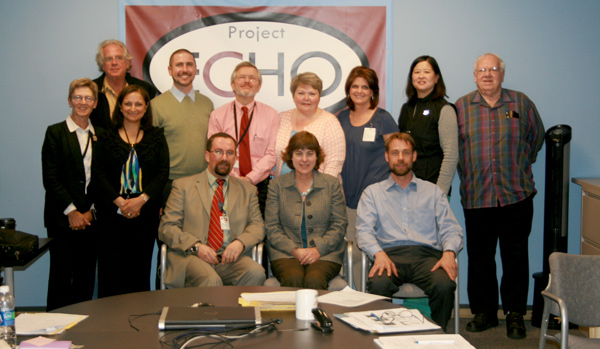 Vulnerable rural or urban underserved populations are unable to access multidisciplinary pain management services. The University of New Mexico Health Sciences Center (UNMHSC) addresses this gap in care by a unique partnership by serving the underserved: UNMHSC multidisciplinary Pain Team treats complex pain patients; Project ECHO offers primary care and other clinicians a weekly didactic pain curriculum and opportunity to present difficult chronic pain cases to the UNMHSC Pain Team via teleconferencing (TeleECHO).
Vulnerable rural or urban underserved populations are unable to access multidisciplinary pain management services. The University of New Mexico Health Sciences Center (UNMHSC) addresses this gap in care by a unique partnership by serving the underserved: UNMHSC multidisciplinary Pain Team treats complex pain patients; Project ECHO offers primary care and other clinicians a weekly didactic pain curriculum and opportunity to present difficult chronic pain cases to the UNMHSC Pain Team via teleconferencing (TeleECHO).
The UNM Pain Center treats patients with complex pain who are referred by providers throughout the state. The TeleECHO clinic, through case-based learning loops, co-manages underserved patients where specialty pain care is absent. Rural providers increase self-efficacy in caring for patients with chronic pain who then receive patient-centered care in their own language, culture, and community. The TeleECHO clinic brings patient-centered expertise at no charge to rural communities through local PCCs who are sensitive to their patients’ cultural diversities; 150 cases were discussed in the past year, and the telehealth initiative is being modeled in other states. The New Mexico Medical Board endorsed this clinic as a model to provide safe, effective pain management and balance in opiate prescribing.
PCCs who present cases in the Pain TeleECHO Clinic have direct access to pain experts who provide interdisciplinary direction for multimodal care. PCCs are offered 2-day training at UNM, which promotes networking and provides access to pain experts. Category One AMA credits™ are provided for every activity.
The unique Project ECHO model gained national and international attention through research publications and is being replicated in several academic centers. UNM pain teams have hosted legislators, academic institutions, and health organizations such as the Veterans Administration to discuss innovative solutions to improve the quality of pain management.
